Sleep like your life depends on it—because for these mammals, it kind of does.
Some animals have turned snoozing into a survival strategy. We’re talking 18 hours a day or more, curled up, zonked out, and barely lifting a paw. You might envy them… until you realize just how strange and fascinating their lives really are.
From tiny bats dangling in caves to massive predators catching Z’s in the shade, these creatures aren’t lazy—they’re built this way. Their bodies conserve energy, avoid predators, and thrive in environments where doing less means staying alive.
And while your boss wouldn’t buy “biological adaptation” as an excuse for your naps, for these mammals, it’s a superpower. Ready to meet the kings and queens of shut-eye? You’ll never look at sleeping the same way again.
Koala
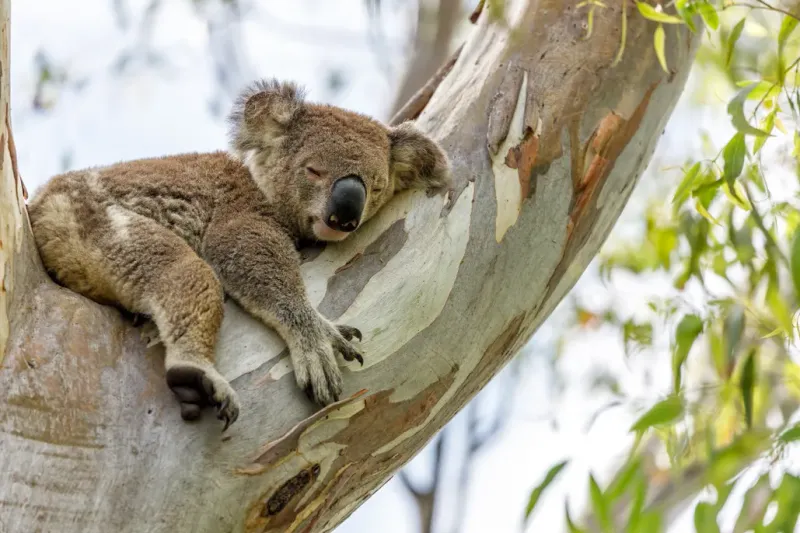
Nestled in the boughs of eucalyptus trees, the koala’s sleepy demeanor is legendary. These marsupials spend up to 22 hours a day resting. Why so sleepy? Their diet of eucalyptus leaves, which are low in nutrients, demands ample rest to aid digestion.
Their bodies are perfectly designed for this arboreal lifestyle, with strong limbs and sharp claws for gripping branches. Koalas rarely need to drink water, as they obtain moisture from their leafy meals.
With such a relaxed approach, it’s no wonder koalas have become symbols of tranquility and conservation efforts.
Sloth

The sloth’s leisurely pace isn’t just on the ground; it’s mirrored in its sleep habits too. Spending 20 hours a day asleep, sloths have honed the art of relaxation.
Their slow metabolism allows them to survive on a diet of leaves and twigs, extracting enough energy while remaining motionless. This slow lifestyle is complemented by their algae-covered fur, aiding camouflage.
Interestingly, their inverted position while hanging helps with blood circulation. Sloths have captivated many with their unique approach to life, embodying calmness and patience.
Little Brown Bat
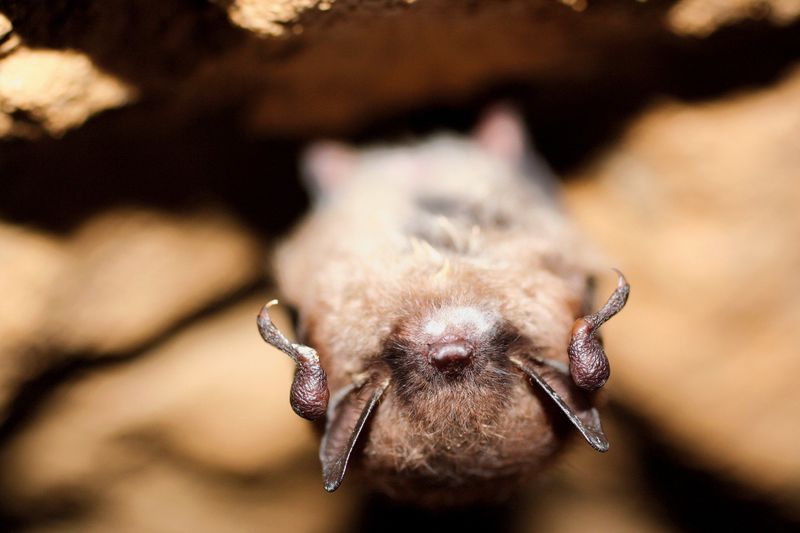
In the dark recesses of caves, the little brown bat finds solace. These nocturnal creatures can sleep up to 20 hours daily, conserving energy for their nightly hunts.
During slumber, they enter a state of torpor, reducing metabolic rates to conserve energy. This adaptation is crucial for surviving long periods without food.
Their keen echolocation skills come to life at night, making them expert insect hunters. The little brown bat’s lifestyle illustrates the delicate balance between rest and activity in the animal kingdom.
Giant Armadillo
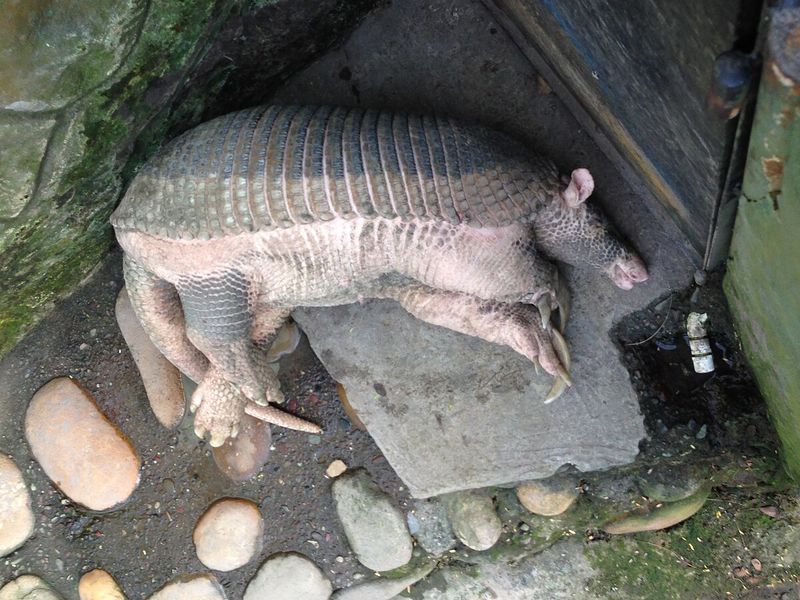
The giant armadillo, with its armor-like shell, spends a surprising 18 hours a day at rest. This nocturnal mammal digs extensive burrows for shelter and protection.
Its diet mainly consists of ants and termites, which requires minimal energy to hunt. The armadillo’s powerful claws are perfect for digging, ensuring its safety underground.
Despite their reclusive nature, these creatures play a vital role in their ecosystem by aerating soil. The giant armadillo’s unique lifestyle showcases the intricate connections within its habitat.
North American Opossum
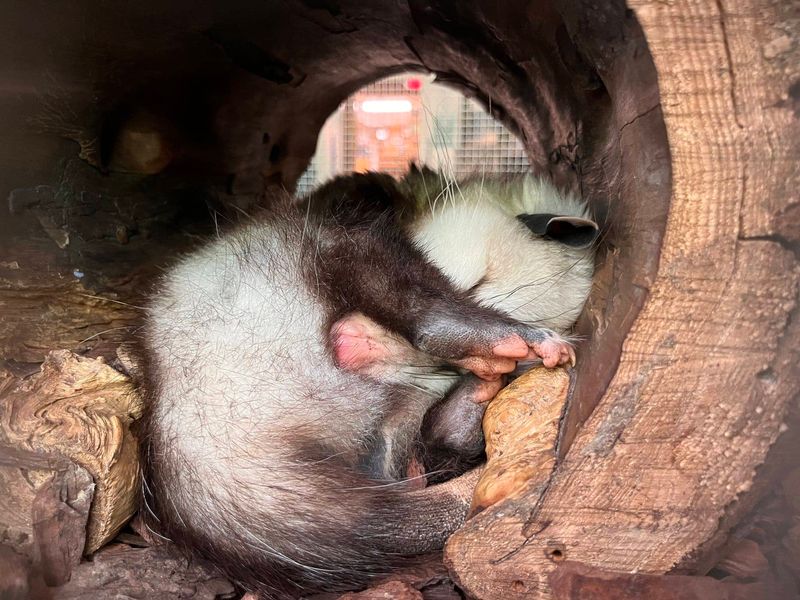
Feigning death is not the only trick up the North American opossum’s sleeve. This marsupial can sleep for up to 18 hours a day, often in urban and suburban areas.
Their flexible diet and adaptability to various environments ensure survival. Opossums are known for their immune systems that repel many diseases, including rabies.
Their opportunistic feeding habits and nocturnal nature make them essential urban dwellers, cleaning up decaying matter. The opossum’s lifestyle is a testament to adaptability and resilience.
Lion
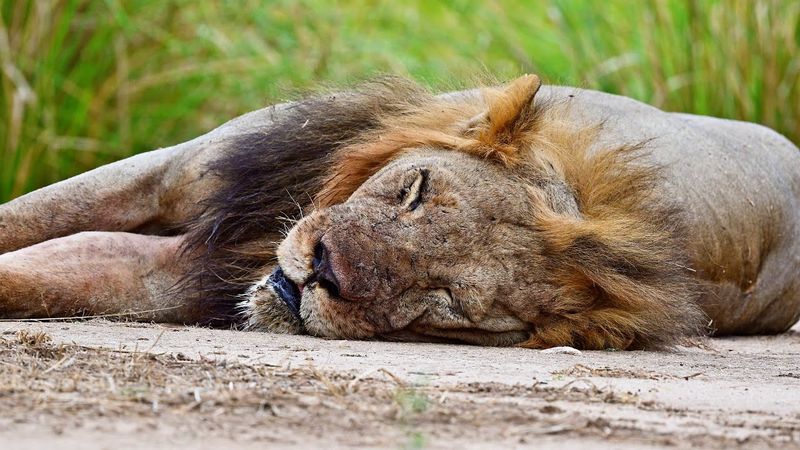
The king of the jungle, the lion, is also a master of rest. Lions sleep for about 20 hours a day, conserving energy for hunting.
Their social structure, living in prides, allows them to protect and nurture each other. This communal living ensures survival in the wild.
With powerful bodies and keen senses, lions are adept hunters, striking when the time is right. Their regal demeanor while resting is iconic, symbolizing strength and unity.
Pygmy Possum
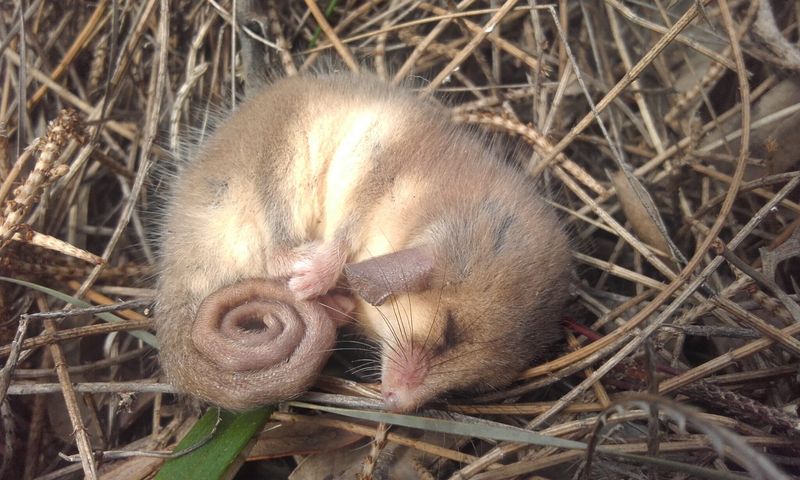
The tiny pygmy possum is a champion of sleep, resting up to 20 hours a day. Found in Australia, these marsupials are adept at conserving energy.
Their small size allows them to hide from predators and survive on minimal resources. They feed on nectar, pollen, and insects, which are abundant in their native habitats.
Their ability to enter torpor, a hibernation-like state, helps them survive harsh conditions. The pygmy possum’s lifestyle is a testament to survival against the odds.
Fat-Tailed Dwarf Lemur
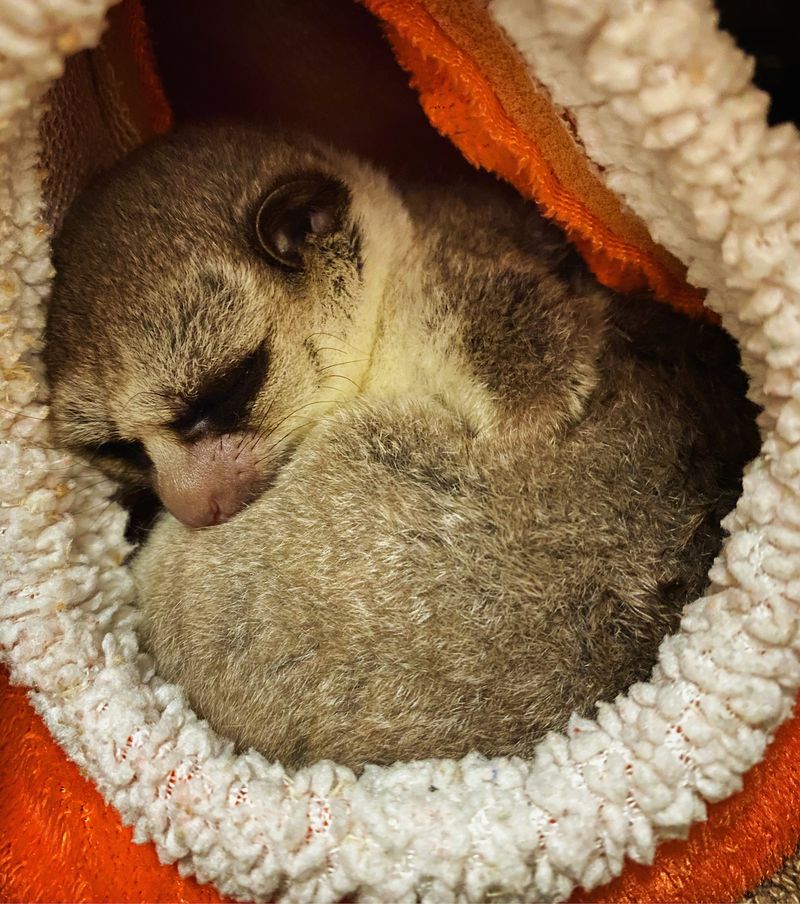
The fat-tailed dwarf lemur is unique for its hibernation habits. Native to Madagascar, this lemur can sleep up to 20 hours.
During dry seasons, they enter prolonged periods of hibernation, living off fat stored in their tails. This adaptation is crucial for surviving food scarcity.
Their nocturnal nature and arboreal lifestyle assist in avoiding predators. The fat-tailed dwarf lemur exemplifies how animals adapt to environmental challenges.
Echidna
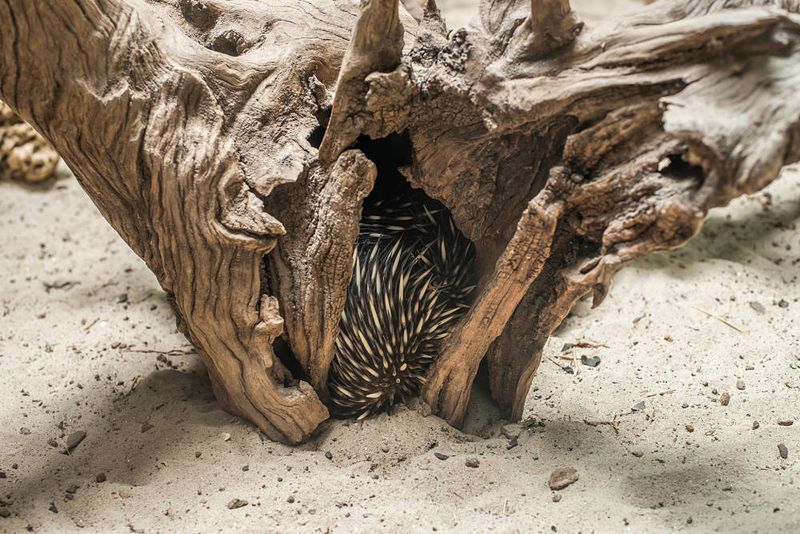
The echidna, a puzzling monotreme, spends much of its day in slumber. These spiky creatures sleep for about 20 hours, thriving in various Australian habitats.
Their diet consists mainly of ants and termites, which are abundant and easy to catch. Echidnas have a low metabolic rate, aiding in energy conservation.
Their spines and burrowing abilities provide protection against predators. The echidna’s distinctive lifestyle is a marvel of evolutionary adaptation.
Platypus

With its unusual appearance, the platypus is equally remarkable in its sleep habits. These monotremes rest for about 18 hours daily, often in burrows near water.
Their webbed feet and sensitive bill make them exceptional swimmers, hunting underwater. The platypus’s diet of aquatic insects and crustaceans supports its energy needs.
Despite their reclusive nature, platypuses play a vital role in their ecosystems. Their existence challenges traditional mammalian characteristics, making them a subject of wonder.
South American Hedgehog
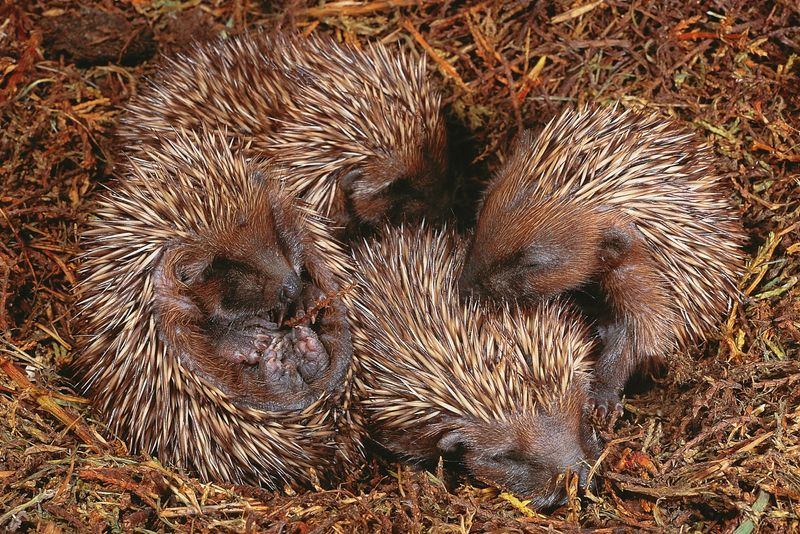
Despite their prickly exterior, South American hedgehogs are champions of rest, sleeping around 18 hours a day. These solitary creatures often snooze during the day.
Their nocturnal foraging for insects and small vertebrates ensures a steady diet. Hedgehogs have a keen sense of smell, aiding in their nighttime hunts.
Their ability to curl into a spiny ball provides defense against predators. The South American hedgehog’s lifestyle highlights nature’s ingenious survival tactics.
Tree Shrew
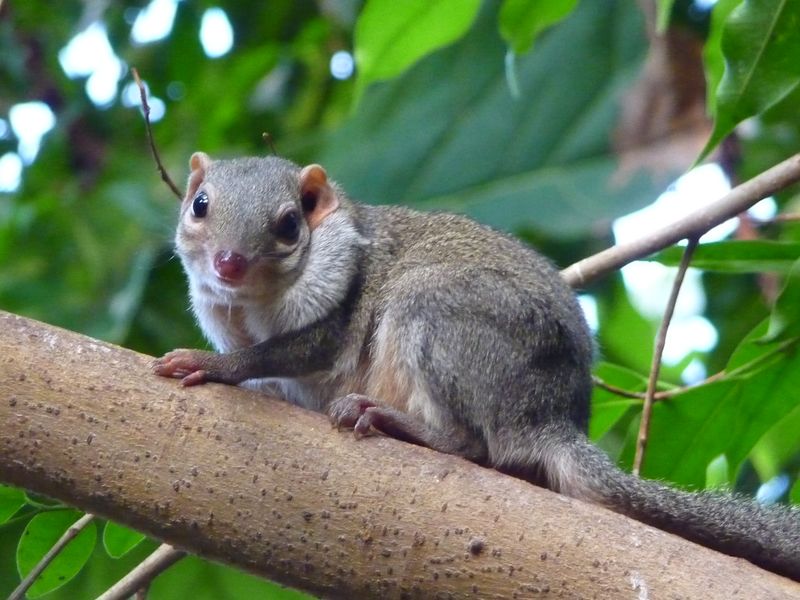
The tree shrew, despite its name, is not a true shrew. This small mammal sleeps about 18 hours a day, thriving in the lush forests of Southeast Asia.
Their diet of fruits and insects is plentiful in their habitat, supporting their active periods. Tree shrews have sharp senses and agile bodies, making them proficient climbers.
Their long periods of rest are essential for recharging their energetic lifestyles. The tree shrew’s existence is a reminder of the diversity within the mammalian world.
Binturong

Known as the bearcat, the binturong spends much of its time resting. These arboreal mammals can sleep up to 20 hours a day, relying on their prehensile tails for balance.
Their dense fur and stocky bodies are adapted for life in the trees. Binturongs have a varied diet, including fruits and small animals, which sustains them.
Their distinctive musky scent marks their territory, a unique trait among mammals. The binturong’s lifestyle is a testament to the diverse adaptations of rainforest inhabitants.
Night Monkey

Night monkeys, or owl monkeys, thrive in nocturnal lifestyles, sleeping for around 17 hours daily. Their large eyes are adapted for low-light environments, aiding their nighttime activities.
Living in family groups, they exhibit strong social bonds, crucial for survival. Their diet consists mainly of fruits and insects, abundant in their jungle habitats.
Their quiet and gentle nature helps them blend into the dense foliage. The night monkey’s existence is a testament to the adaptability and diversity of primates.

